
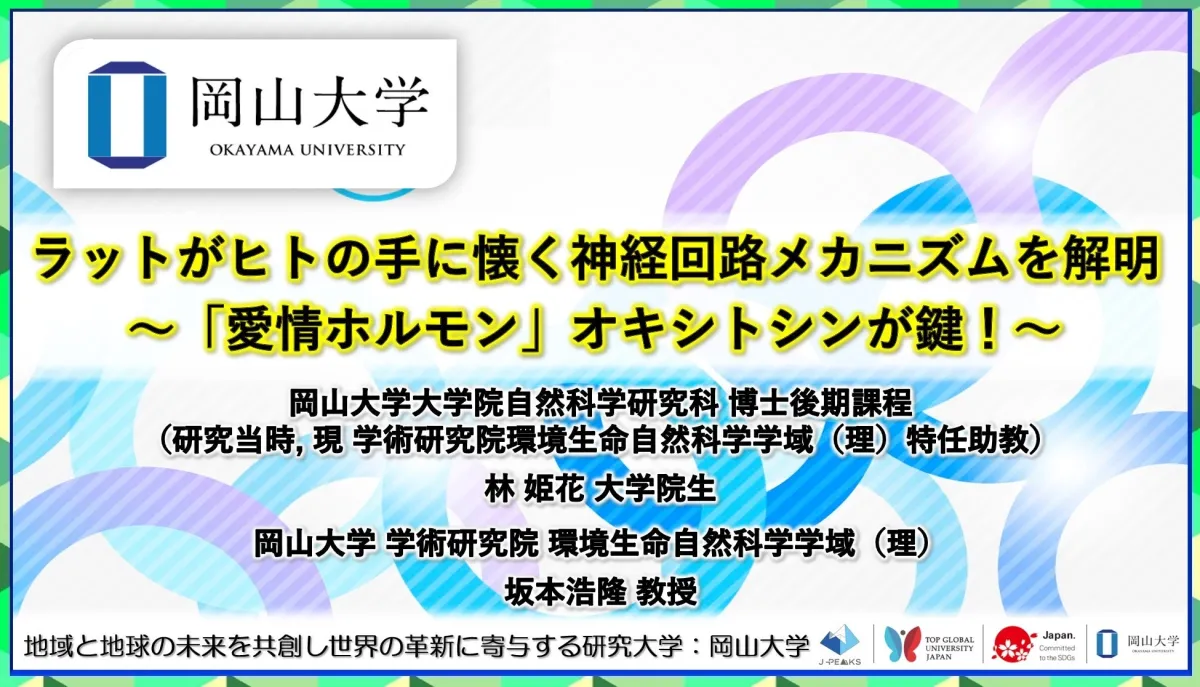
Okayama University Unveils Mechanism Behind Rats' Attachment to Human Touch
Understanding Rat Affection Towards Humans Through Oxytocin Mechanisms
A recent groundbreaking study conducted by researchers from Okayama University, in collaboration with international institutions including Jichi Medical University, Shimane University, Nippon Medical School, and Heidelberg University, has unveiled the intricate neural circuit mechanism involving oxytocin that enables rats to form affectionate bonds towards human touch. This revelation holds profound implications for understanding social bonds across species and could enhance therapeutic practices in animal-assisted therapy and the assessment of attachment disorders.
The Research Findings
On June 5, 2025, the findings were published in the international journal "Current Biology." The research team, which included Himeka Hayashi, a graduate student at Okayama University, and Hirotaka Sakamoto, a professor of neuroendocrinology, discovered that the activation of oxytocin receptors in a specific brain area known as the ventromedial hypothalamus (VMHvl) plays a crucial role in mediating the effects of pleasant tactile stimuli. This understanding came from experiments simulating the natural playful interactions observed among young rats during their developmental stages, termed as 'handling' by human hands.
Through rigorous experiments, it was evident that rats which were subjected to consistent handling exhibited strong affectionate behaviors towards human hands. Notably, these rats produced ultrasonic vocalizations at a frequency of 50 kHz, indicating pleasure, and began approaching human hands voluntarily. Moreover, the preference for locations associated with handling during conditioned place preference tests underlined the positive emotional associations formed through these interactions.
To delve deeper into the neural mechanisms at play, the research team employed pharmacogenetic techniques (DREADDs) to temporarily inhibit the function of neurons connected to oxytocin receptors within the VMHvl. The results showed a marked decrease in the affectionate behaviors of rats towards human touch, emphasizing the role of this neural pathway in the attachment process. Furthermore, anatomical analyses identified direct neural connections from the supraoptic nucleus (SON) to the VMHvl, suggesting that this circuit regulates the formation of attachment between rats and human hands.
Broader Implications
These findings open new avenues for understanding how positive tactile interactions can foster social bonds across species through the oxytocin system. This understanding is especially significant in fields such as animal-assisted therapy and the treatment of attachment disorders. Not only does this research unpack the neurobiological foundations of affection, but it also enhances the potential for developing new therapeutic approaches informed by these insights.
Insights from the Researchers
Professor Hirotaka Sakamoto remarked, "The intricate affection circuits within the brain that facilitate this familiar phenomenon of rats bonding with human touch have been unveiled! It's a reminder that, despite initial wariness, animals can become attached through patient and gentle interactions. Indeed, both humans and animals are connected by an invisible thread spun by oxytocin. This research doesn't merely explain rat behavior but illuminates the universal mechanisms behind bond formation across species. Understanding these changes facilitated by the love hormone may lead to broad applications ranging from the effects of animal therapy to new support methods for autism."
Himeka Hayashi added, "This research might just shed light on the long-standing puzzle regarding how animals form friendships. If even a tickle can alter the brain chemistry of rats, one might wonder if similar reactions involving oxytocin occur within our own brains when developing close relationships or falling in love. At last, it seems science is beginning to unravel the molecular mysteries of the bonds expressed through poetry by ancient poets."
Conclusion
The rigorous study carried out at Okayama University not only advances our understanding of interspecies emotional connections but also paves the way for future research into therapeutic interventions that leverage these biological insights. The profound implications of the oxytocin-mediated bonding mechanisms continue to inspire further explorations into the intricate workings of social affection and attachment in both animals and humans.
For more information on this study, please refer to the original publication in "Current Biology" or visit the Okayama University website.
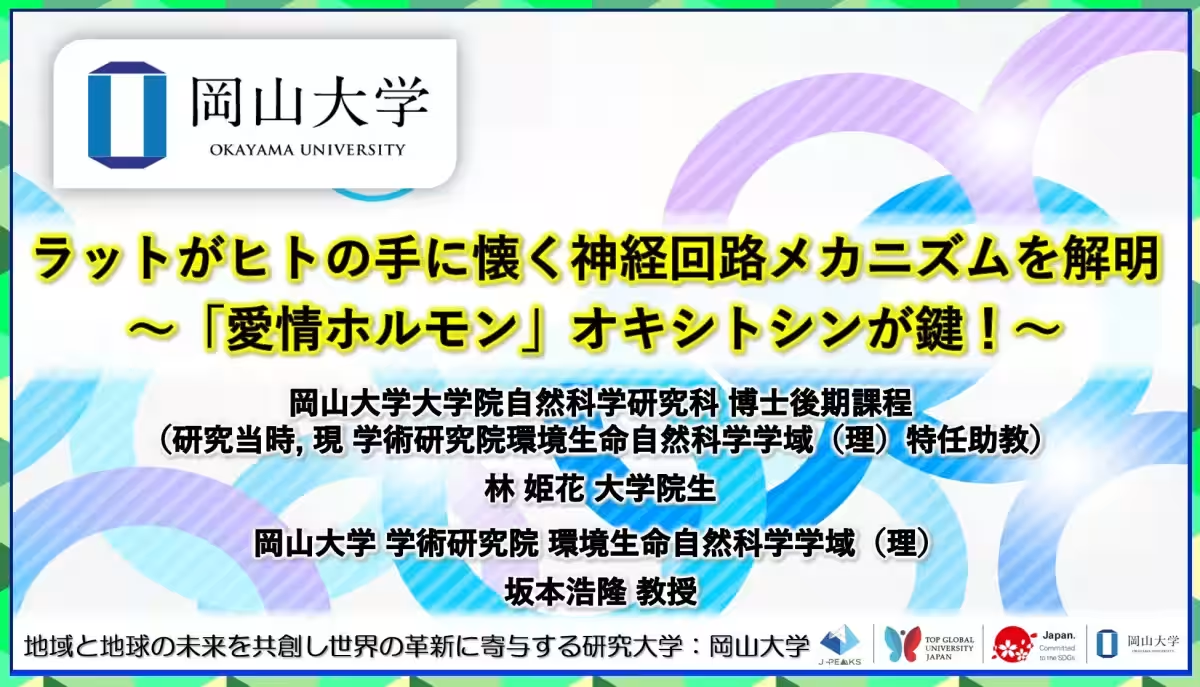
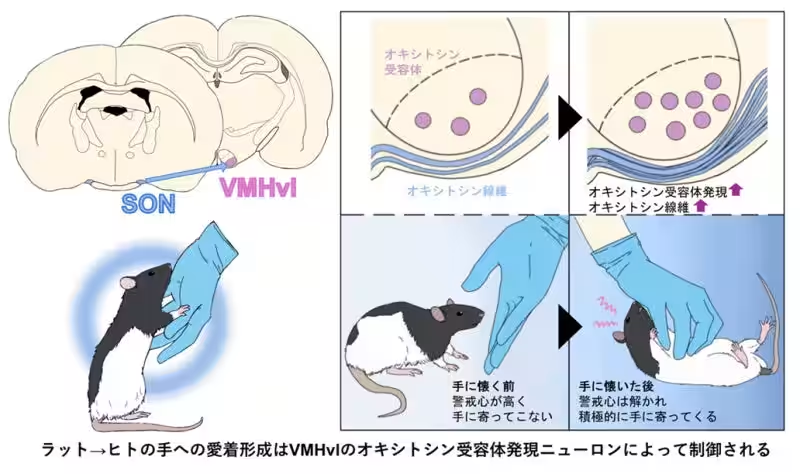

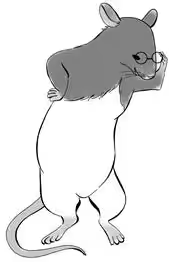
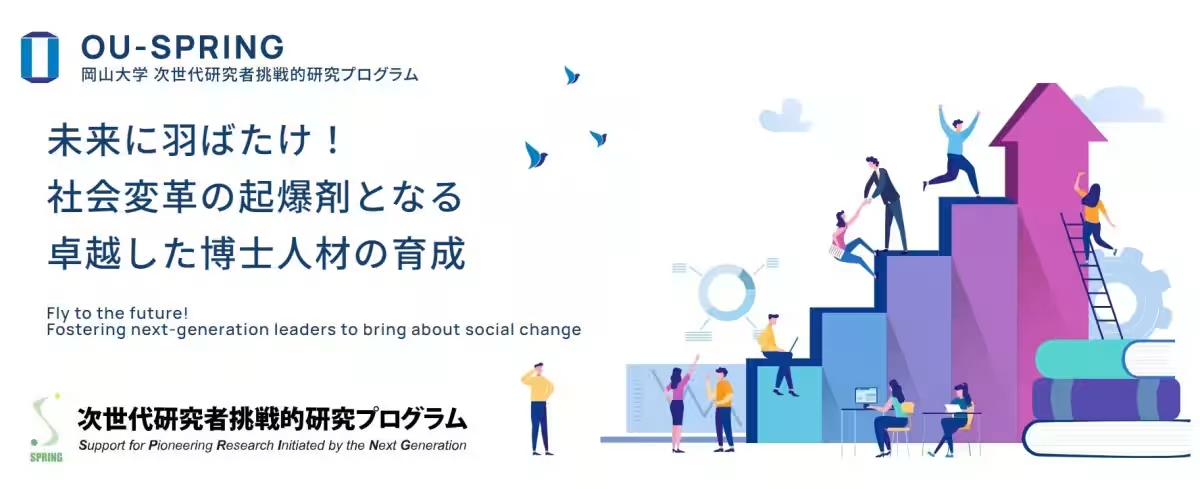




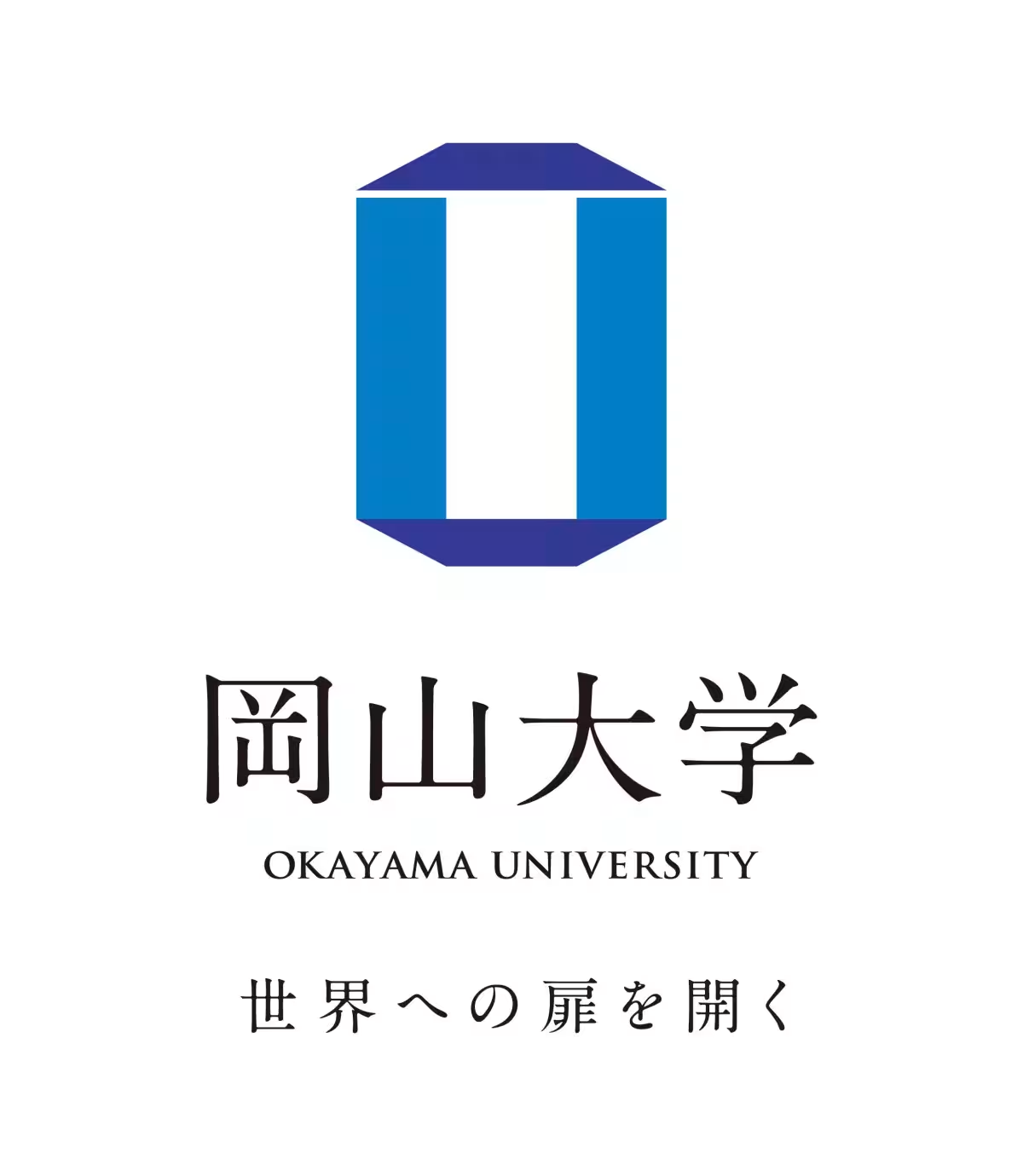
Topics Other)










【About Using Articles】
You can freely use the title and article content by linking to the page where the article is posted.
※ Images cannot be used.
【About Links】
Links are free to use.